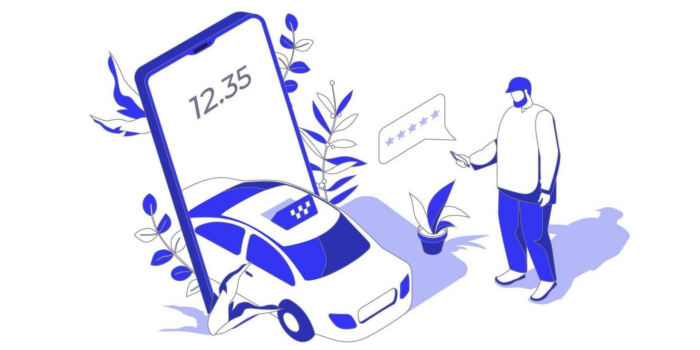Imagine clicking on a website and feeling the weight of a carbon footprint pressing down on the Earth. Sounds dramatic, right? But here’s the kicker: the internet is responsible for 2% of global greenhouse gas emissions—that’s equivalent to the entire country of Germany!
Enter the world of sustainable web development, where every pixel and line of code can either be a hero or a villain in the fight against climate change.
We, at Segwitz, are a web development agency in Malaysia that supports sustainable development practices from the depths of our hearts. With that said, we’re not going to just talk about eco-friendly practices; we’re diving deep into actionable steps to make your website a green powerhouse.
It’s time to code for a better planet!
The Current State of Web Sustainability
While we often marvel at the convenience and speed of the digital world, we rarely pause to consider its environmental toll.
For instance, did you know that a single email with a 1MB attachment can produce 19g of CO2 emissions?
As the global population steadily increases and more people gain access to the internet, the number of computers and data centers is set to skyrocket.
This amplifies the concept of a “digital carbon footprint,” which goes beyond just website visits to include all our online activities.
With the internet’s energy consumption expected to double by 2025, the call for sustainable web development has never been louder.
As a result of this, more and more web development agencies in Malaysia are taking up arms for sustainable web development — including us.
Why Sustainable Web Development Matters
Ethical Implications
- Global Warming: The internet’s energy consumption contributes greatly to global warming, making sustainable practices not just an option but a necessity.
- Resource Depletion: Traditional web hosting services often rely on non-renewable energy sources, depleting valuable resources.
Business Benefits of Sustainable Web Design
Cost-Efficiency: Believe it or not, a sustainable website is often a more cost-efficient website. Optimizing assets and reducing server calls can lower hosting costs. Acquire the expertise of a web development agency in Malaysia like Segwitz to get the most green out of your buck.
Customer Trust: In an era where consumers are becoming increasingly eco-conscious, having a sustainable website can enhance your brand’s reputation and trustworthiness.
SEO Advantages: Search engines are increasingly recognizing sustainability as a factor. Thus, a green, fast, and efficient website can improve your SEO rankings greatly.
The Triple Bottom Line
The concept of the “Triple Bottom Line” encapsulates the three P’s: People, Planet, and Profit. A sustainable web development agency in Malaysia like ours employs this model for its social, environmental, and economic benefits.
Did You Know? Companies that focus on sustainability have 55% better operational performance and are 38% more likely to have strong financial returns.
How to Make Your Website Sustainable: A Step-by-Step Guide
Step 1: Optimize Your Images
Images are a double-edged sword when it comes to web development. While they make your website visually appealing, they can also be resource hogs. Large image files not only slow down your website but also consume more energy, contributing to a larger digital carbon footprint. Tools like ImageOptim and TinyPNG can compress these files without sacrificing quality. This is a crucial first step in making your website more sustainable and user-friendly.
Step 2: Choose Green Hosting
A web development agency in Malaysia tends to choose the most convenient or powerful option for hosting service; neither which are necessarily the sustainable choice. Traditional hosting services often rely on fossil fuels, which contribute to greenhouse gas emissions. Green hosting services like Google Cloud Platform or GreenGeeks use renewable energy sources, reducing your website’s carbon footprint. This choice not only benefits the environment but can also be a selling point for eco-conscious consumers.
Step 3: Reduce Server Calls
Every time a user visits your website, a series of server calls are made to fetch various elements like images, CSS, and JavaScript files. Each of these calls consumes energy. By optimizing your website to reduce these calls, you can significantly lower its energy consumption. A seasoned web development agency in Malaysia leverages Google Developer Tools to help identify unnecessary server calls. Minimizing plugins and external scripts can also contribute to fewer server calls and a more sustainable website.
Step 4: Implement Lazy Loading
Lazy loading is considered a highly effective performance-boosting technique when it comes to building a sustainable online presence. By delaying the loading of images and other media that aren’t immediately visible, you reduce the initial energy consumption of page loading. You may begin with JavaScript libraries like Lozad.js to implement this feature. It’s a simple yet effective way to make your website more eco-friendly.
Step 5: Use CSS Sprites
CSS Sprites are an advanced technique that can make your website faster and more energy-efficient. Here’s how it works – By combining multiple images into a single file, you reduce the number of HTTP requests, which in turn reduces the energy needed to fetch these files. Although it may require a bit of technical know-how, the benefits in terms of speed and sustainability are substantial.
Step 6: Web Caching
Web caching is like having a ‘quick access’ folder for your most-used files. By storing copies of these files, you reduce the need to fetch them from the server every time a user visits your site. This not only speeds up your website but also significantly reduces its energy consumption, leading to lower greenhouse gas emissions. Implementing both browser and server-side caching can provide a comprehensive solution for a more sustainable website.
Step 7: Monitor and Improve
Remember, sustainability is a continuous journey, not a destination. Regular monitoring using tools like Google PageSpeed Insights can provide actionable insights into your website’s performance. Keeping an eye on metrics like bounce rates can also give you clues about areas that may need optimization.
Real-World Sustainable Web Design Examples
Here are a few of the most popular sustainable design examples that you, as a business, can take inspiration from:
1. Google’s “One Planet” Initiative
Google has been a pioneer in sustainable web development with its “One Planet” initiative. The tech giant aims to operate entirely on carbon-free energy by 2025. Their website is a prime example, optimized for speed and low energy consumption, showcasing how even large-scale platforms can be sustainable. Some web development agencies in Malaysia are gearing up to make this a possibility for local businesses as well.
2. Etsy’s Carbon-Neutral Shipping
Etsy, the popular e-commerce platform for handmade goods, offsets 100% of carbon emissions from shipping. Their website is designed to be energy-efficient, with optimized images and server calls, setting a standard for e-commerce websites.
3. Greenpeace’s Eco-Friendly Platform
Greenpeace has always been at the forefront of environmental activism. Their website follows suit, employing green hosting and optimized assets to minimize its digital carbon footprint.
4. Patagonia’s Commitment to the Environment
Outdoor clothing brand Patagonia has a website that reflects its commitment to environmental responsibility. From green hosting to optimized images, the website is a case study of how commercial sites can be both appealing and sustainable.
The Future is Green, So Should Your Website Be
As we’ve explored, sustainable web development is not just an ethical choice but a smart business decision. From optimizing images to choosing green hosting, each step you take towards sustainability has both immediate and long-term benefits. It enhances the user experience, boosts SEO, and, most importantly, contributes to a healthier planet.
But remember, sustainability is an ongoing journey, and you may require the services of a web development agency in Malaysia to implement. The digital landscape is ever-evolving, and so should your efforts to make your website more eco-friendly. Tools and techniques will change, but the underlying principle remains the same: to create a digital space that is as green as it is effective.
Take Action Now
Don’t wait for a better tomorrow; start today. Your first step towards a more sustainable website could be as simple as compressing a few images or as significant as switching to a green hosting service. Every effort counts.
Ready to make your website eco-friendly? Share this article to spread the word, and let’s make the internet a greener place, one website at a time. For personalized tech strategies that align with sustainability, consider partnering with Segwitz, your go-to tech strategist in Malaysia. And if you’re a business exploring ways to make the most out of web and mobile app development – we don’t mean to brag, but our blog is a storehouse of value-packed content that you should check out. How about “top trends of mobile app development in 2023” for your next read?
FAQs
Q: What Are the Key Benefits of Sustainable Website Development?
Sustainable website development not only helps reduce your digital carbon footprint but also improves the user experience and SEO rankings. By optimizing your website for sustainability, you can attract a broader, more eco-conscious audience
Q: How Can Businesses in Malaysia Specifically Benefit from Sustainable Web Design?
For businesses in Malaysia, sustainable web design can be a unique selling point, especially as the country moves towards greener initiatives. Partnering with reliable tech strategists like Segwitz can provide personalized, eco-friendly solutions tailored to the Malaysian market.
Q: Are There Any Tools to Measure Website Sustainability?
Yes, tools like Google PageSpeed Insights and the Website Carbon Calculator can provide valuable data on your website’s energy consumption and loading speed, helping you make informed decisions for further optimization.




 Booking System
Booking System eCommerce
eCommerce On-Demand Services
On-Demand Services Community App
Community App Ordering App
Ordering App Loyalty App
Loyalty App Online Learning
Online Learning Directory
Directory Marketplace
Marketplace SaaS
SaaS P2P Platform
P2P Platform eHailing
eHailing Healthcare
Healthcare Finance
Finance Logistics
Logistics Education
Education Food & Beverage
Food & Beverage Retail
Retail FMCG
FMCG Sports
Sports Travelling
Travelling Manufacturing
Manufacturing Renewable Energy
Renewable Energy Mobile Application Development
Mobile Application Development Web Application Development
Web Application Development Source Code Review
Source Code Review Internet of Things (IoT)
Internet of Things (IoT) Cyber Security
Cyber Security SegWitz SandBox – Dev-Team as Subscription
SegWitz SandBox – Dev-Team as Subscription SegWitz Streamline – SOP Systemization
SegWitz Streamline – SOP Systemization SegWitz ScaleUp – Tech Transformation of SME & PLC
SegWitz ScaleUp – Tech Transformation of SME & PLC SegWitz StartUp – MVP & Scaling
SegWitz StartUp – MVP & Scaling